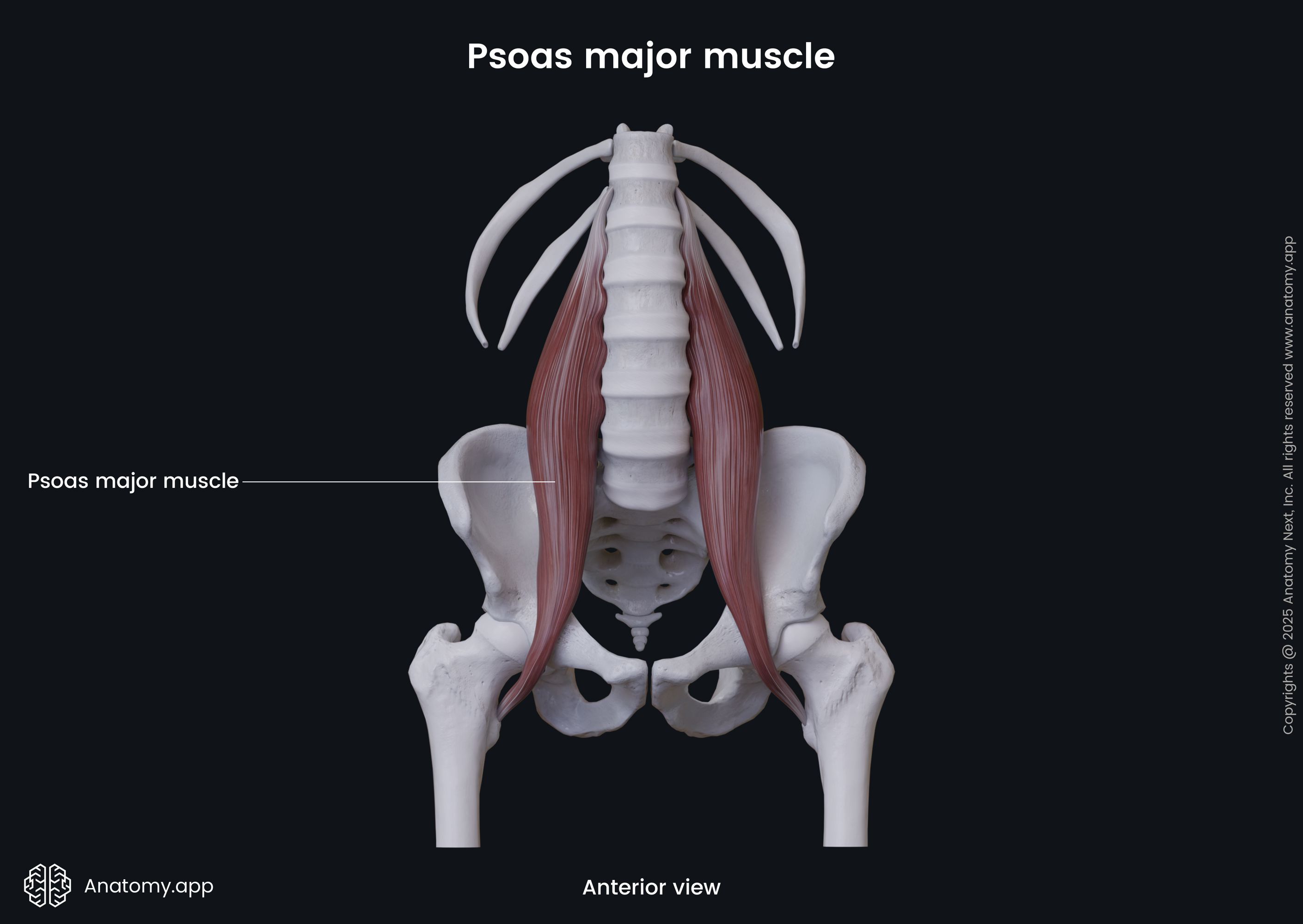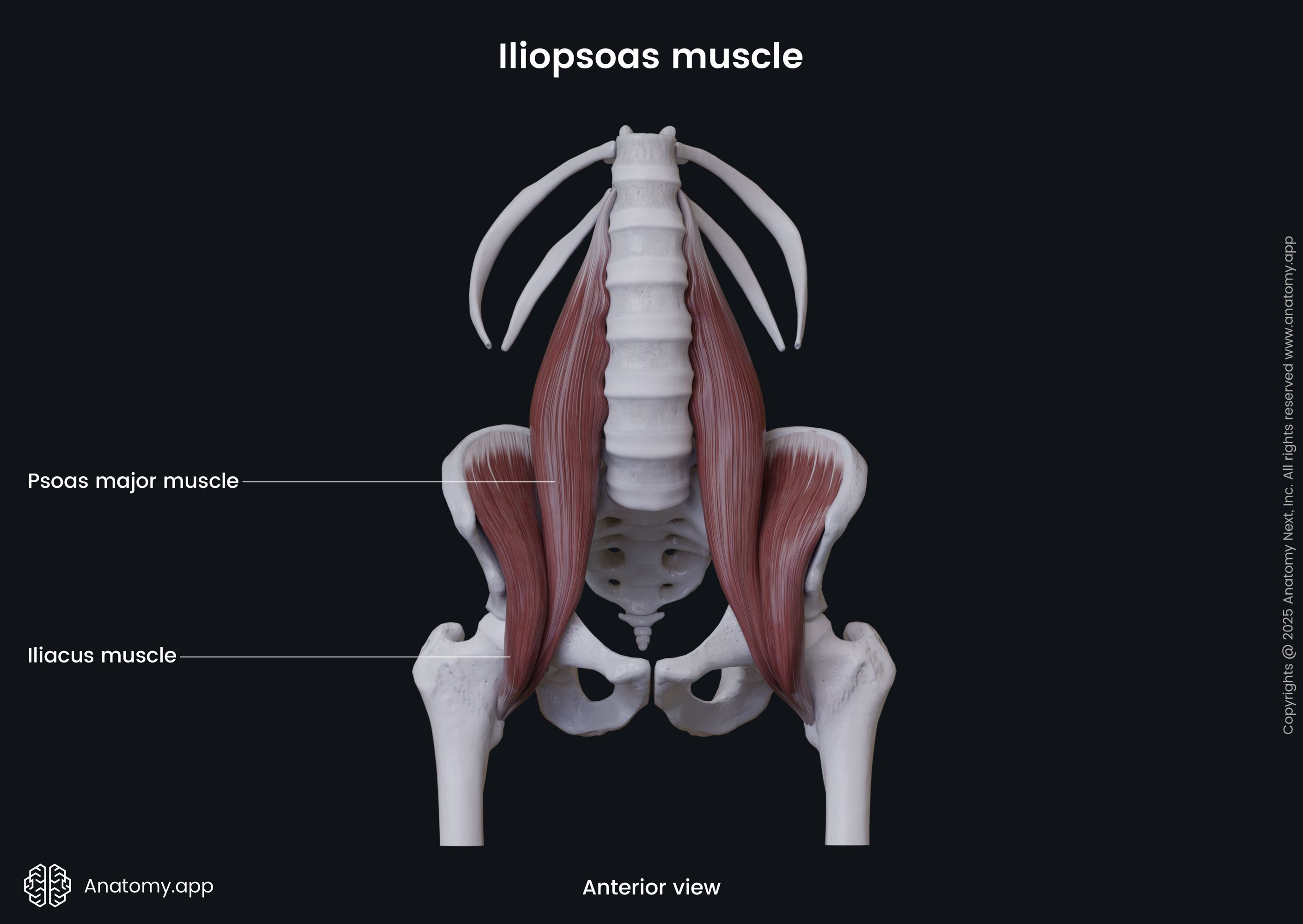- Anatomical terminology
- Skeletal system
- Joints
- Muscles
- Head muscles
- Neck muscles
- Muscles of upper limb
- Thoracic muscles
- Muscles of back
- Muscles of lower limb
- Pelvic muscles
- Muscles of thigh
- Muscles of leg
- Muscles of foot
- Heart
- Blood vessels
- Lymphatic system
- Nervous system
- Respiratory system
- Digestive system
- Urinary system
- Female reproductive system
- Male reproductive system
- Endocrine glands
- Eye
- Ear
Psoas major
The psoas major (Latin: musculus psoas major) is a long and large muscle of the pelvis that is located lateral to the lumbar spine. It stretches between the thoracic and lumbar vertebrae and femur. Together with the iliacus muscle, psoas major forms the iliopsoas muscle. It belongs to the anterior compartment of the pelvic muscles and is one of the posterior abdominal wall muscles.


| Psoas major | |
| Origin | Superficial part - vertebral bodies T12 - L4, intervertebral discs T12 - L4 Deep part - transverse processes of vertebrae L1 - L5 |
| Insertion | Lesser trochanter of femur |
| Action | Thigh flexion, trunk flexion, thigh external rotation |
| Innervation | Anterior rami of lumbar spinal nerves (L1 - L3) |
| Blood supply | Iliolumbar artery, lumbar arteries, deep circumflex iliac artery |
Origin
The psoas major muscle is composed of two parts - superficial and deep. The superficial part arises from the lateral sides of the vertebral bodies of the twelfth thoracic (T12) and upper four lumbar vertebrae (L1 - L4) and their intervertebral discs. The deep part originates from the transverse process of the lumbar vertebrae L1 - L5.
Insertion
The psoas major merges with the iliacus muscle and forms a common tendon that inserts on the lesser trochanter of the femur.
Action
The psoas major muscle provides flexion of the thigh and trunk. Also, it assists in the external rotation of the thigh.
Innervation
The psoas major is innervated by the anterior rami of the lumbar spinal nerves (L1 - L3).
Blood supply
The psoas major muscle receives arterial blood supply from the iliolumbar artery - a branch of the internal iliac artery. Also, it is supplied by the lumbar branches of the abdominal aorta, muscular branches of the common iliac artery and deep circumflex iliac artery arising from the external iliac artery.